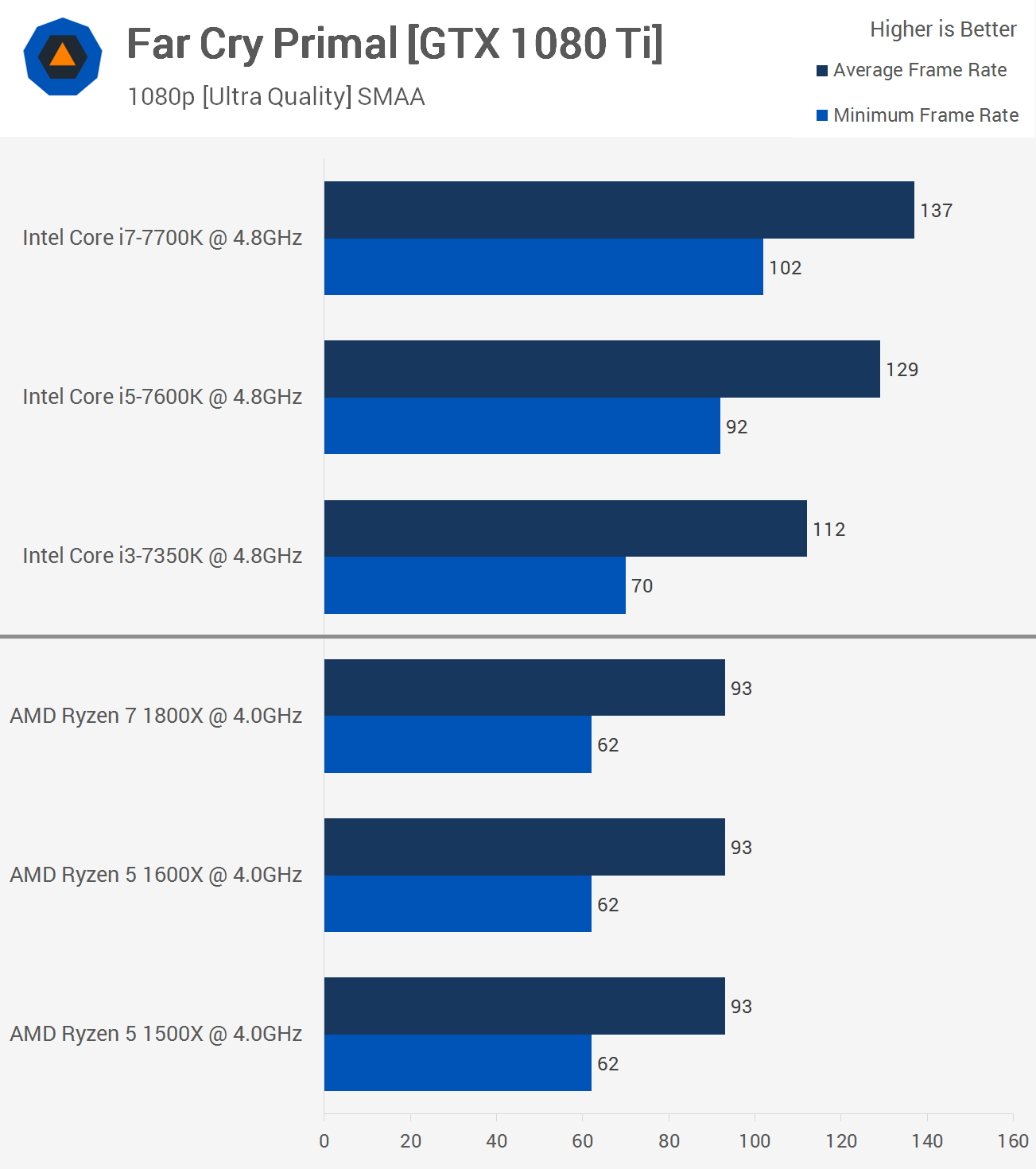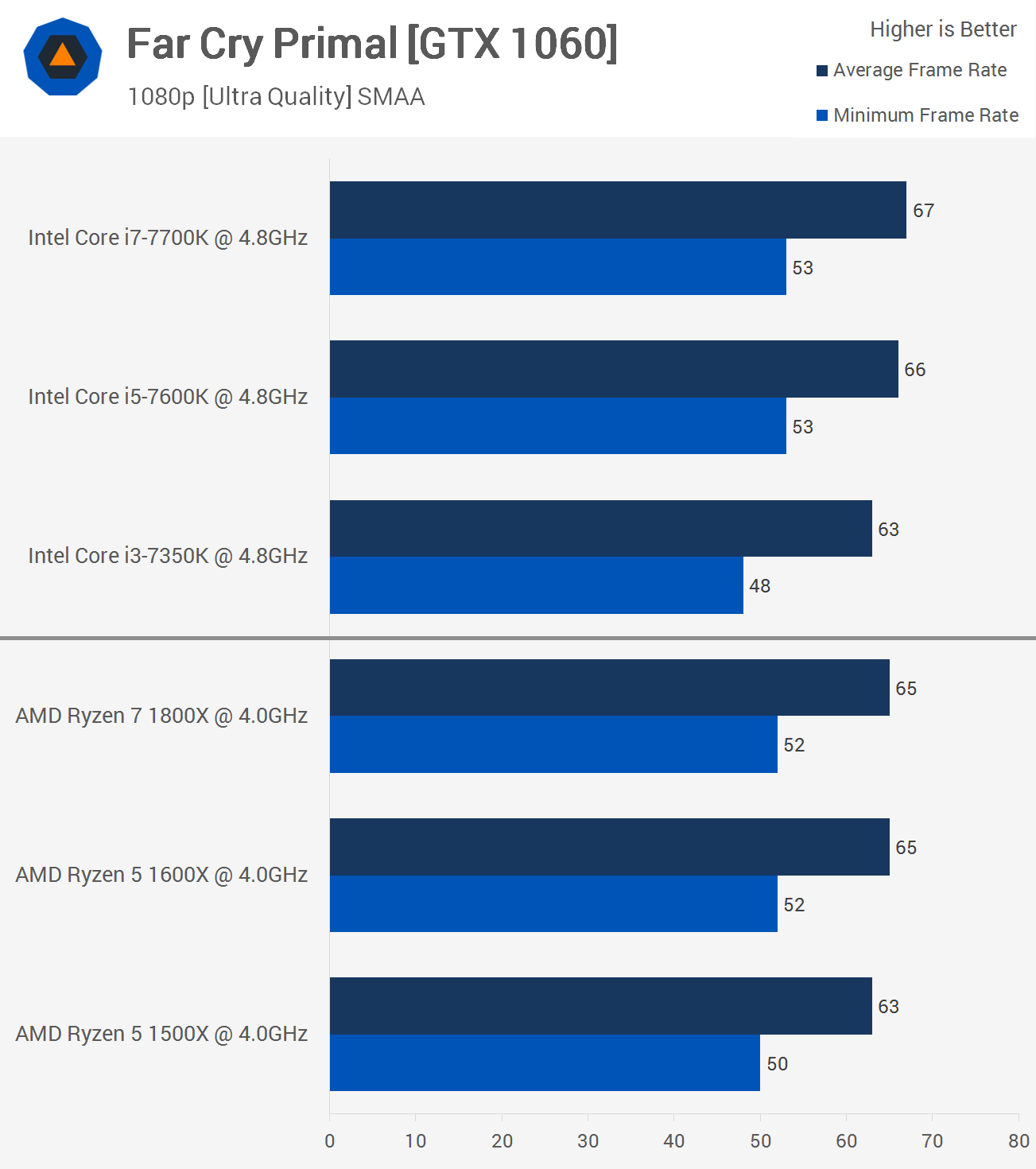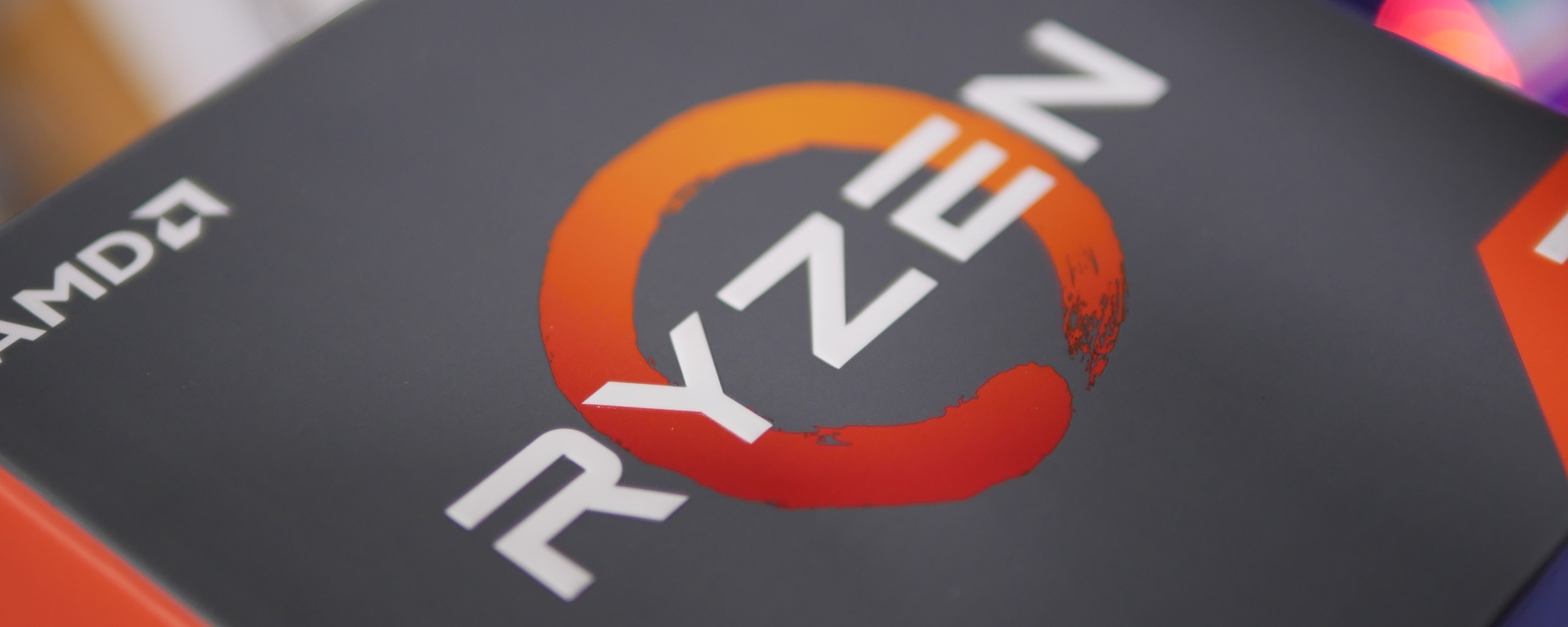AMD confirmed the official specifications for its upcoming Ryzen 5 CPUs last week, which will become available in exactly three weeks. However, by announcing those specifications, the company has largely let the cat out of the bag.
We now know a few things that we'd suspected for a while: Ryzen 5 is the same physical chip as Ryzen 7, so all models have two CCXs, each with four physicals cores, though not all of them are enabled. The six-core models have one core disabled from each CCX, while the quad-core parts disable two cores per CCX.
Since reviewing Ryzen 7, we've been meaning to explore the downcore functionality found in the BIOS of all AM4 motherboards. This setting lets you disable cores within the CCX modules or disable an entire CCX altogether.
I've also been keen to test the eight-core Ryzen 7 CPUs using a range of GPUs. To date I've only benchmarked gaming performance using the extreme Titan X Pascal, so I thought it'd be interesting to test with not just a high-end GPU but also something more realistic like the GTX 1070 and perhaps even the GTX 1060.
Now armed with the knowledge of exactly how Ryzen 5 CPUs will be configured and the ability to mimic those settings, I pulled a stack of GPUs out of storage and got testing.
Needless to say, we don't actually have a Ryzen 5 CPU yet, we're merely disabling cores to simulate the specifications and performance for that series – or at least for the 1500X and 1600X which have a full 16MB L3 cache. How close are we going to get? Pretty close, we think.
Being an achievable overclock for the flagship, I decided to lock the Ryzen 7 1800X at 4GHz, but I've been limited to 3.9GHz on some 1700X chips and 3.8GHz on one of my 1700 chips, so 4.0GHz is by no means guaranteed for all Ryzen 7 processors. To keep everything equal, I ran all the Ryzen configurations in this writeup at 4GHz.
At that frequency I was able to simulate overclocking performance of the Ryzen 5 1600X as well as Ryzen 5 1500X, assuming both will be able to run all cores at 4GHz.
For comparison's sake, I also tested with three Kaby Lake CPUs (the dual-core Core i3-7350K w/ HyperThreading, the quad-core 7600K and quad-core 7700K w/ HT) since they represent the best gaming performance right now in most titles. They also have no trouble hitting 4.8GHz, which could be considered a mild overclock.
I won't be focusing on clock-for-clock comparison for this article considering we know Kaby Lake's IPC performance is slightly better – no need to go over that again.
All CPUs including the Ryzen models were paired with DDR4-3000 memory as well as GPUs including the GTX 1080 Ti, GTX 1070 and GTX 1060. We didn't use AMD graphics cards because none of them can replicate the 1080 Ti's performance and I'd rather keep the results consistent by using all Nvidia cards than swap the GTX 1060 for an RX 480 just to give AMD's GPUs a showing.
Ahead we have the results of more than 300 benchmark runs from six games using six CPU configurations and three GPUs...
|
Ryzen System Specs
|
Kaby Lake & Skylake System Specs
|
Far Cry Primal
I wanted to include Far Cry Primal as this is a game where Ryzen really struggles and I also wanted to see how quickly we run into a GPU bottleneck with less extreme GPUs.
Disabling cores within the CCXs doesn't help improve performance here, though we never expected that it would. After this article I'd like to test with the second CCX disabled to see what kind of a difference that makes in games like Far Cry where Ryzen has a tough time.

With all cores clocked at 4.0GHz, the Ryzen CPUs are still no match for even the Core i3 in Far Cry Primal, and it's worth noting that we saw strong gains when moving from the 7350K to the 7600K and then again to the 7700K.

When testing with the GTX 1070, the Kaby Lake processors appear all bunched up as this isn't a CPU-intensive title. The Ryzen CPUs aren't too far behind now though they are still lagging behind even with a lesser GPU.

With the GTX 1060 handling the rendering work, the Ryzen CPUs are pretty much on par with Kaby Lake. It's not that long ago that this kind of performance (which is roughly the equivalent to the GTX 980) was considered extremely high-end.
Far Cry Primal has been developed in a way that just doesn't work well with the Zen architecture and it's unlikely that we'll see a patch for better support given the game's age. I've found previously that disabling SMT really helps in Far Cry Primal, boosting performance by around 15%.
Mafia III
Hyper-Threading can make a massive difference in this title and knowing how much it loves threads, I made sure to include results from Mafia III.

Immediately notable, the Core i7-7700K was 41% faster than the 7600K when comparing the minimum frame rates, while the simulated Ryzen 5 1500X configuration managed to match the higher-clocked 7600K, which was impressive to see.
Likewise, out of the box the 1800X is actually slightly faster than the 7700K in this title, though overclocking would allow Intel's chip to pull ahead by about 10fps. The simulated 1600X was also faster than the 7600K while the 1500X was slightly slower for the average but slightly faster for the minimum.

We see yet again that when dropping down to the GTX 1070, the Ryzen CPUs seem to perform better than Intel's parts. I assume this is down to the fact that they provide better minimum frame rates and these slower GPUs can't hit quite the same highs, ultimately dragging the average down.
When paired with the GTX 1070, the 1800X and simulated 1600X are both faster than the 7700K clocked at 4.8GHz while the 1500X is roughly on par with the 7600K – quite an impressive result given that it's clocked 17% lower.

Now with the GTX 1060 installed, all the CPU configurations provide pretty much the exact same performance, which is of course limited by the GPU here.




